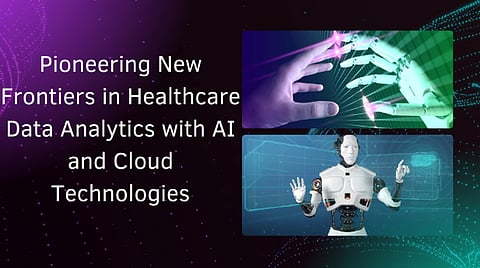

In today's fast-paced technological landscape, the healthcare industry is witnessing a seismic shift through the transformative potential of artificial intelligence (AI) and cloud-native architectures. These groundbreaking innovations are redefining how data is handled, secured, and applied in clinical settings, ushering in a new era of efficiency and precision. This article delves into these advancements, guided by the insights of Rishi Kumar Sharma, a renowned expert in healthcare analytics. His exploration sets a benchmark for the future, highlighting the opportunities and challenges in revolutionizing patient care and operational excellence.
The healthcare industry is grappling with an explosion of data. Estimates suggest that data generation in healthcare will reach a staggering 2,314 exabytes by 2025. From electronic health records (EHRs) generating 80 MB per patient annually to medical imaging producing 50 petabytes globally, the volume and complexity of data necessitate robust management solutions. Cloud-native architectures emerge as the heroes of scalability, enabling seamless handling of massive data volumes while ensuring operational continuity.
Modern cloud platforms excel in managing high-volume workloads, achieving horizontal scalability to accommodate over 100,000 concurrent users. This adaptability ensures not just efficient data processing but also rapid response times, a critical factor in real-time healthcare environments.
Revolutionary integrations of AI and ML are being seen with healthcare analytics. Predictive models for chronic disease detection can attain up to 95% accuracy. Natural language processing systems can interpret clinical notes at 90% precision. The result is more rapid, informed decisions by health care providers leading to better outcomes for patients.
Besides, real-time data monitoring systems predict critical health events for up to 48 hours in advance. This proactive ability itself helps in building the capability of improving patient care and reducing admissions into the hospitals through timely interventions.
Increasing the digitization in healthcare requires protecting the data security and maintaining regulation compliance. A daunting average of 1,425 cyberattacks occurs in health care organizations weekly. In opposition to such attacks, new, innovative security frameworks are being applied. Advanced encryption protocols such as 256-bit AES, role-based access control, and multi-factor authentication have defined a new perspective regarding how sensitive data can be safeguarded.
Another one of equal importance is continuous compliance monitoring. The machines are now enabled to monitor and track over 100,000 access events without flinching every day that would thus prevent a breach occurrence at an effective reduction rate. The mechanisms ensure that patient data is secured and also upheld to the tightest regulatory demands such as HIPAA and GDPR.
It is indeed the arrival of serverless computing that changed the game when it came to real-time analytics on healthcare. Event-driven architectures enable the processing of 10,000 events per second, with minimal latency, a 40% better rate than traditional systems. This has translated into reduction in costs of infrastructure and faster processing times.
For example, serverless platforms handle millions of daily events, making sure that healthcare systems are agile and responsive. They eliminate the need for traditional servers, thus optimizing resource allocation while enhancing scalability.
Integration of AI in patient engagement tools is revolutionizing the patient experience. From AI-driven chatbots answering 75% of patient questions with a 94% satisfaction rate to personalized health recommendations improving medication adherence by 42%, these innovations are encouraging a more proactive healthcare approach.
Additionally, telehealth platforms and automated scheduling systems have dramatically increased patient engagement. By reducing appointment no-shows and enabling remote consultations, these tools ensure healthcare remains accessible and efficient.
Cloud-native architectures are not just answering today's challenges but also preparing healthcare systems for the future. The most cutting-edge solutions in this regard are multi-tenant infrastructures, containerized microservices, and Kubernetes orchestration. These technologies ensure unmatched reliability and uptime, up to 99.999%, and scale to dynamic demands.
Furthermore, the operational costs of such architectures are decreased dramatically, hence optimizing efficiency and sustainability. Aligning them with healthcare's increasing demands for data enables organizations to focus on the essentials—delivery of excellent patient care.
In conclusion, Rishi Kumar Sharma highlights that the transformative impact of cloud-native AI architectures and advanced healthcare analytics is reshaping the industry's landscape. Not only do they bring about greater patient outcomes and higher operational efficiencies but also make this industry more secure. The three ingredients for bringing out this capability are collaboration, continuous innovation, and resilience when trying out new technology. By wholeheartedly embracing these advancements, healthcare organizations are well-positioned to create a future that is not only technologically advanced but also secure, scalable, and deeply centered on patient care.
